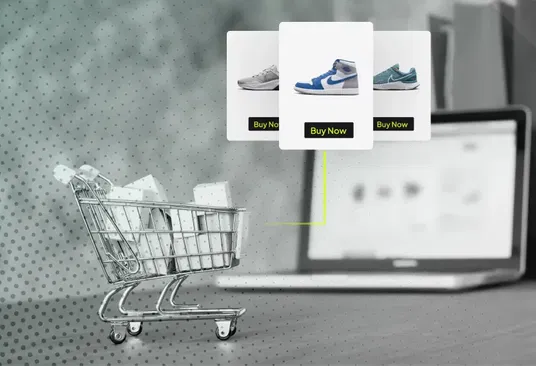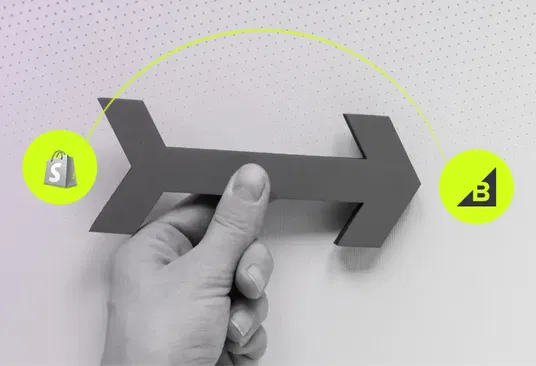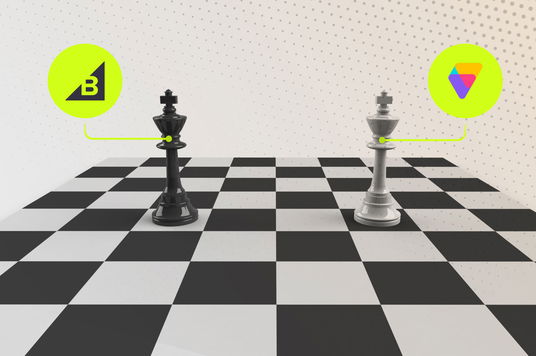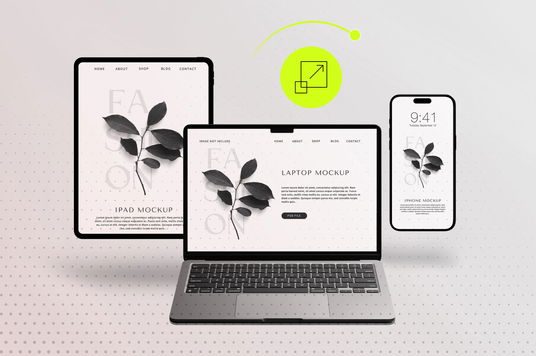Key eCommerce Trends for Apparel Brands and How to Act on Them

- The Rapidly Evolving Apparel eCommerce Landscape
- AI-Powered Personalization and Recommendations
- AR and Virtual Try-On Technologies
- Social Commerce and Influencer Integration
- Sustainability and Circular Fashion
- Mobile-First and Progressive Web Apps
- Voice Commerce and Conversational Shopping
- Subscription and Rental Business Models
- Blockchain, NFTs, and Digital Fashion
- Implementation Roadmap and Priorities
- Frequently Asked Questions
- Key Takeaways
The Rapidly Evolving Apparel eCommerce Landscape
The apparel eCommerce industry is experiencing unprecedented transformation. New technologies, changing consumer behaviors, and evolving market dynamics are reshaping how fashion brands connect with customers and drive sales.
Staying ahead of these trends isn't just about competitive advantage—it's about survival. Fashion brands that fail to adapt to emerging trends risk losing market share to more agile competitors who embrace innovation.
The Innovation Imperative
Apparel brands that adopt emerging trends early see 40-60% higher growth rates and 25% better customer retention compared to late adopters. The key is knowing which trends to prioritize and how to implement them effectively.
This comprehensive guide explores the most impactful eCommerce trends for apparel brands in 2025 and provides actionable strategies for implementation. We'll cover both emerging technologies and evolving consumer behaviors that are reshaping the fashion industry.
"The fashion brands that will dominate the next decade are those that can seamlessly blend cutting-edge technology with authentic brand experiences, creating shopping journeys that feel both innovative and personal."
— Fashion Technology Research Institute 2025
AI-Powered Personalization and Recommendations
Artificial Intelligence is revolutionizing how apparel brands understand and serve their customers. AI-powered personalization has moved from nice-to-have to essential for competitive fashion eCommerce.
Current AI Applications in Fashion
Advanced AI Features for Apparel Brands:
- Visual Search and Recognition: Customers upload photos to find similar items
- Style Profiling: AI learns individual style preferences and shopping patterns
- Size Prediction: Machine learning algorithms predict optimal sizes for each customer
- Trend Forecasting: AI analyzes social media and fashion data to predict trends
- Dynamic Pricing: Real-time price optimization based on demand and inventory
Action Plan: Implementing AI Personalization
- Start with Recommendation Engine: Implement basic product recommendations based on browsing and purchase history
- Add Visual Search: Enable customers to search using images for better product discovery
- Implement Size AI: Use customer data to predict optimal sizes and reduce returns
- Personalize Content: Customize homepage, emails, and product displays based on individual preferences
- Advanced Analytics: Use AI to analyze customer behavior and optimize the shopping experience
AR and Virtual Try-On Technologies
Augmented Reality is solving one of fashion eCommerce's biggest challenges: helping customers visualize how products will look and fit before purchase.
AR Technology Impact
AR Applications by Product Category:
| Product Category | AR Technology | Implementation Complexity |
|---|---|---|
| Sunglasses & Eyewear | Face tracking and overlay | Low - High adoption |
| Jewelry & Watches | Hand/wrist tracking | Medium - Growing rapidly |
| Footwear | Foot tracking and sizing | Medium - Emerging technology |
| Clothing | Body scanning and fitting | High - Early adoption phase |
Action Plan: AR Implementation Strategy
- Phase 1: Start with accessories (sunglasses, jewelry) for easier implementation
- Phase 2: Expand to footwear with size and fit visualization
- Phase 3: Implement full clothing try-on for key product categories
- Integration: Ensure AR features work seamlessly across mobile and desktop
- Analytics: Track AR usage and impact on conversion and return rates
Social Commerce and Influencer Integration
Social media platforms are becoming primary shopping destinations, especially for fashion. Social commerce represents a massive opportunity for apparel brands to reach customers where they discover trends.
Social Commerce Growth
Key Social Commerce Platforms for Fashion:
- Instagram Shopping: Product tags, Shop tab, and checkout integration
- TikTok Shopping: In-app purchasing and trend-driven discovery
- Pinterest Shopping: Visual discovery and product catalogs
- Facebook Shops: Comprehensive storefront integration
- YouTube Shopping: Video-driven product demonstrations and purchases
Influencer Commerce Integration
Influencer partnerships are evolving beyond sponsored posts to integrated commerce experiences:
- Affiliate Integration: Seamless tracking and commission management
- Co-Creation Programs: Influencers help design and promote exclusive collections
- Live Shopping Events: Real-time shopping experiences with influencer hosts
- User-Generated Content: Customer photos and reviews integrated into product pages
Action Plan: Social Commerce Strategy
- Platform Integration: Set up shopping features on Instagram, TikTok, and Pinterest
- Content Strategy: Create shoppable content that showcases products naturally
- Influencer Program: Develop systematic influencer partnerships with tracking and analytics
- User-Generated Content: Encourage and showcase customer photos and reviews
- Live Commerce: Experiment with live shopping events and real-time engagement
Sustainability and Circular Fashion
Sustainability is no longer optional for fashion brands. Consumers, especially younger demographics, prioritize environmental responsibility in their purchasing decisions.
Sustainability Impact on Purchase Decisions
Sustainable Fashion eCommerce Features:
- Sustainability Scoring: Rate products based on environmental impact
- Material Transparency: Detailed information about fabrics and production methods
- Carbon Footprint Tracking: Show environmental impact of purchases and shipping
- Circular Commerce: Resale, rental, and recycling program integration
- Ethical Supply Chain: Transparency about manufacturing and labor practices
Circular Fashion Business Models
Forward-thinking fashion brands are implementing circular economy principles:
Traditional Linear Model
- Make → Use → Dispose
- Single-use mentality
- High waste generation
- Resource depletion
Circular Fashion Model
- Design → Use → Reuse → Recycle
- Extended product lifecycles
- Waste minimization
- Resource optimization
🌱 Sustainability ROI: Fashion brands with strong sustainability programs see 20% higher customer loyalty and 15% premium pricing power. Our apparel eCommerce development services include sustainability feature integration and circular commerce capabilities.
Mobile-First and Progressive Web Apps
Mobile commerce continues to dominate fashion shopping, but the focus is shifting from mobile-responsive to mobile-first experiences and Progressive Web Apps (PWAs).
Mobile Commerce Statistics
Progressive Web App Benefits for Fashion:
- App-Like Experience: Native app functionality without app store downloads
- Offline Browsing: Customers can browse products without internet connection
- Push Notifications: Re-engage customers with personalized messages
- Fast Loading: Instant loading times improve user experience and conversions
- Home Screen Installation: Easy access without app store friction
Action Plan: Mobile-First Strategy
- PWA Development: Convert your site to a Progressive Web App for better mobile experience
- Touch Optimization: Design for thumb-friendly navigation and gestures
- Performance Optimization: Achieve sub-2-second load times on mobile
- Mobile Payments: Integrate Apple Pay, Google Pay, and other mobile wallets
- Voice Search: Enable voice search for hands-free product discovery
Voice Commerce and Conversational Shopping
Voice commerce is emerging as a new frontier for fashion brands, though implementation requires careful consideration of the unique challenges in apparel shopping.
Voice Commerce Adoption
Voice Commerce Applications in Fashion:
- Product Search: "Find black dresses under $100"
- Reordering: "Reorder my usual size medium t-shirts"
- Style Advice: "What should I wear to a business meeting?"
- Size Assistance: "What size should I order in this brand?"
- Order Tracking: "Where is my recent order?"
Subscription and Rental Business Models
Alternative business models are gaining traction as consumers seek more flexible and sustainable ways to access fashion.
Alternative Fashion Models Growth
Subscription Model Variations:
- Styling Services: Curated selections based on personal preferences
- Rental Subscriptions: Access to premium fashion without ownership
- Replenishment Services: Automatic delivery of basics and essentials
- Exclusive Access: Early access to new collections and limited editions
- Customization Services: Personalized products delivered regularly
Action Plan: Subscription Integration
- Market Research: Identify which subscription model fits your brand and customers
- Pilot Program: Start with a small-scale subscription offering to test demand
- Technology Integration: Implement subscription management and billing systems
- Logistics Optimization: Develop efficient fulfillment processes for recurring orders
- Customer Experience: Create seamless subscription management interfaces
Blockchain, NFTs, and Digital Fashion
While still emerging, blockchain technology and digital fashion represent significant opportunities for forward-thinking apparel brands.
Digital Fashion Applications
- Digital Collectibles: NFT fashion items for virtual worlds and social media
- Authentication: Blockchain-based product authenticity verification
- Supply Chain Transparency: Immutable records of production and sourcing
- Loyalty Programs: Blockchain-based rewards and exclusive access
- Virtual Try-On: Digital fashion for avatars and virtual experiences
⚠️ Implementation Caution: While blockchain and NFTs offer interesting possibilities, focus on proven ROI trends first. These technologies are still experimental for most fashion brands and should be approached carefully with clear business cases.
Implementation Roadmap and Priorities
Not all trends should be implemented simultaneously. Here's a strategic roadmap for prioritizing trend adoption:
Priority Matrix for Trend Implementation
| Priority Level | Trends to Implement | Timeline | Expected ROI |
|---|---|---|---|
| High Priority | Mobile-first PWA, AI personalization, Social commerce | 0-6 months | High (20-40% improvement) |
| Medium Priority | AR try-on, Sustainability features, Voice commerce | 6-12 months | Medium (10-25% improvement) |
| Low Priority | Subscription models, Blockchain/NFTs | 12+ months | Variable (depends on execution) |
Implementation Success Factors
- Customer-Centric Approach: Implement trends that solve real customer problems
- Data-Driven Decisions: Use analytics to measure impact and optimize implementations
- Gradual Rollout: Test new features with small user groups before full deployment
- Integration Focus: Ensure new features integrate seamlessly with existing systems
- Performance Monitoring: Continuously monitor impact on key business metrics
✅ Implementation Success: Fashion brands that strategically implement 3-4 key trends see 35-50% improvement in key metrics within 12 months. The key is choosing the right trends for your specific brand and customer base.
Frequently Asked Questions
1. Which eCommerce trends should apparel brands prioritize first?
Focus on mobile-first optimization, AI-powered personalization, and social commerce integration first. These trends have proven ROI and directly address current consumer behaviors. They typically show 20-40% improvement in key metrics within 6 months.
2. How much should I budget for implementing these trends?
Budget varies significantly by trend complexity. Basic implementations start at $25,000-$50,000, while comprehensive trend adoption can require $200,000-$500,000+. The key is prioritizing trends with the highest ROI for your specific business model.
3. Are AR and AI technologies worth the investment for smaller fashion brands?
Yes, but start strategically. AI personalization and basic AR features are now accessible to smaller brands through SaaS solutions. Start with simple implementations and scale based on results. Many solutions offer pay-per-use models that reduce upfront investment.
4. How important is sustainability for fashion eCommerce success?
Increasingly critical, especially for younger demographics. 73% of Gen Z consumers prioritize sustainability in fashion purchases. Even basic sustainability features like material transparency and carbon footprint tracking can improve brand perception and customer loyalty.
5. Should I implement all social commerce platforms at once?
No, start strategically. Begin with 1-2 platforms where your target audience is most active. Instagram and TikTok are typically highest priority for fashion brands. Master these before expanding to additional platforms.
6. How do I measure the success of trend implementations?
Track conversion rates, average order value, customer acquisition cost, return rates, and customer lifetime value. Set baseline measurements before implementation and monitor changes monthly. Most successful implementations show positive impact within 3-6 months.
7. What's the biggest mistake brands make when adopting new trends?
The biggest mistake is implementing trends without clear business objectives or customer needs. Focus on trends that solve real problems for your customers and align with your business goals. Technology for technology's sake rarely delivers ROI.
8. How do I stay updated on emerging eCommerce trends?
Follow industry publications, attend fashion tech conferences, monitor competitor implementations, and track customer behavior changes. Partner with experienced development agencies who specialize in fashion eCommerce to stay ahead of emerging trends.
Key Takeaways
The eCommerce trends for apparel brands in 2025 represent both tremendous opportunities and significant challenges. Success requires strategic thinking, careful prioritization, and flawless execution.
The most impactful trends for fashion brands are:
- AI-Powered Personalization: Essential for competitive customer experiences and conversion optimization
- Mobile-First PWAs: Critical for capturing the 79% of fashion purchases happening on mobile
- Social Commerce: Necessary for reaching customers where they discover and share fashion
- AR Try-On Technology: Powerful for reducing returns and increasing purchase confidence
- Sustainability Integration: Increasingly important for brand differentiation and customer loyalty
- Voice and Conversational Commerce: Emerging opportunity for early adopters
The key to success is not implementing every trend, but choosing the right trends for your specific brand, customers, and business objectives. Start with high-impact, proven trends before experimenting with emerging technologies.
The Competitive Advantage
Fashion brands that strategically implement 3-4 key trends see 35-50% improvement in conversion rates, customer satisfaction, and revenue growth. The brands that act now will have significant advantages over those that wait.
"The future of fashion eCommerce belongs to brands that can seamlessly blend innovation with authentic customer experiences. The trends are clear—the question is how quickly and effectively you can implement them."
— 1Center Fashion Innovation Team
Ready to Implement These Game-Changing Trends?
Don't let your fashion brand fall behind the competition. Our team specializes in implementing cutting-edge eCommerce trends for apparel brands, from AI personalization to AR try-on technology. We help you choose the right trends and execute them flawlessly for maximum ROI.
Get Your Free Trend Implementation Strategy Session →
Or explore our comprehensive apparel eCommerce development services to see how we can help your fashion brand stay ahead of the trends.
About 1Center
1Center is a leading eCommerce development agency specializing in implementing cutting-edge trends for fashion and apparel brands. Our team stays at the forefront of fashion technology, helping brands from startups to enterprises adopt and optimize the latest eCommerce innovations. We combine deep technical expertise with fashion industry knowledge to deliver trend implementations that drive real business results.
Written byPublished June 04, 2025
1Center


